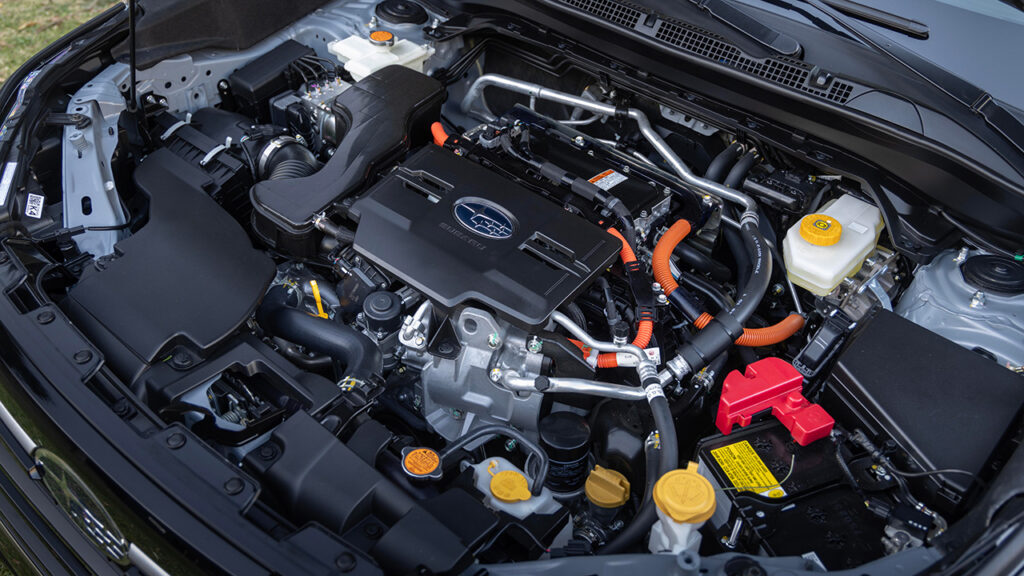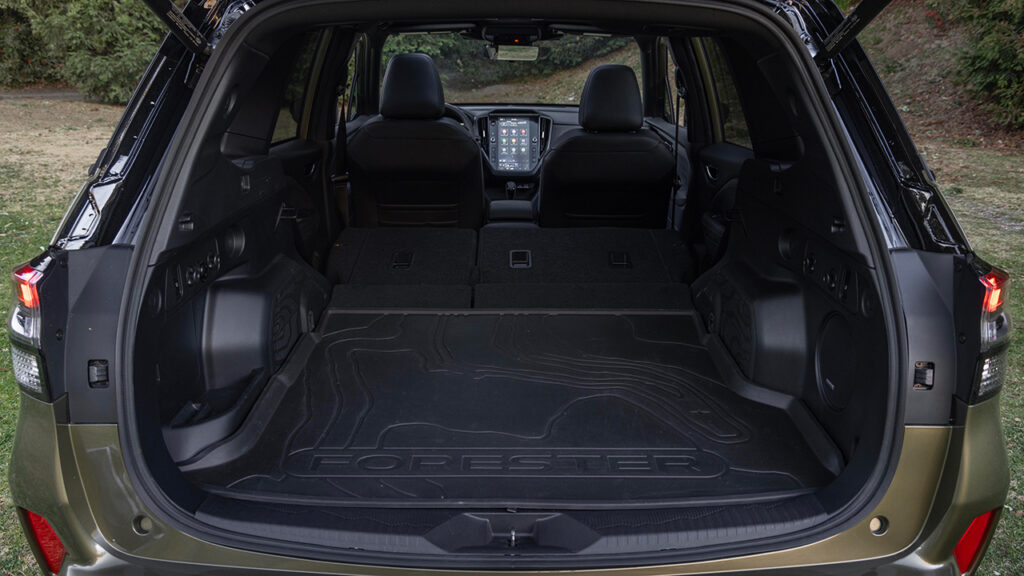The Subaru Forester Is Coming to America
Subaru is moving production of the popular model to Indiana.

The Subaru Forester is the brand’s most popular model in the U.S. and it will soon become a naturalized citizen.
The compact SUV is currently imported from Japan, but production is moving to Subaru’s factory in Indiana later this year. The shift was in the works long before President Trump announced new tariffs on imported vehicles, but the timing couldn’t be better for Subaru.
The Forester has been fully redesigned for 2025 and is available for the first time with a hybrid powertrain, which will be added to the Indiana production early next year. The model is just slightly larger than the one it replaced, but is vastly improved.
Pricing starts at $31,415 for a conventional Forester in the Base trim and $34,805 for a Premium, while a Premium Hybrid is $38,015. I recently tested a top-of-the-line Touring Hybrid priced at $44,715 with every option available.

The standard Forester comes equipped with a 180 hp 2.5-liter engine in the brand’s signature flat-four-cylinder configuration. To this, the hybrid adds two electric motors. One helps propel it and one charges the battery with excess energy harvested from the engine and brakes. The combined output of 194 hp power is sent to all the wheels through a continuously variable automatic transmission, as is the case with all of Subaru’s SUVs.
Soon that is all it will be selling, aside from the tiny BRZ two-door sports car, because the Indiana-built Legacy sedan is being discontinued to make room at the factory for the Forester. Priced at $26,015, the Legacy is currently one of the least expensive vehicles built in the U.S., but sedans just don’t sell as well as they used to.
The new Forester has a familiar look, but its styling is a bit boxier than the last one’s. Its relatively enormous windows provide the best visibility of any vehicle I can think of, short of a convertible.
Passenger space is similarly abundant in both rows of seats, which have a mix of leather and suede upholstery and are all heated, while the front buckets are also ventilated. The cargo area isn’t the biggest in class, but it is far from small. One trade-off for the hybrid is that the battery is mounted under the load floor, so there isn’t any room for a spare tire. You get a flat-fixing kit and an air pump, instead.
The hybrid has a digital instrument cluster and a large portrait-oriented touchscreen for the infotainment system and most controls. There are tuning and volume knobs, along with buttons for the temperature and window defrosters. Apple CarPlay and Android Auto smartphone integration are included.

Dive into the menus on the screen and you’ll discover a panoply of features. The Touring has a 360-degree camera system, a lane-centering adaptive cruise control, a camera that can be activated to makes sure the driver is paying attention and the X-Mode traction management system with settings for Dirt, mud, snow and deep snow. It is a Subaru, after all.
The Forester comes with all season tires, so you’ll need to upgrade them if you often drive on challenging surfaces, but even with the street rubber it is very capable on dirt and gravel roads. It has 8.7 inches of ground clearance, which is more than some pickup trucks offer, so you have to go out of your way to run into trouble.
Most Foresters will spend most of their time on the street, however, and this new one excells there. It’s far quieter than previous editions and the ride quality is smooth and controlled.
Pavement is also where you’ll get the most payback for choosing the hybrid. It has fuel economy rating of 35 mpg combined, which is exactly what it delivered across the days that I had it. That compares to 28 or 29 mpg for the non-hybrid models and will save the average driver $250-$300 annually on fuel, according to the EPA. While the Forester’s lectric motor doesn’t add much power to go with the efficiency, the immediate response does help to give it a more responsive feel when you hit the accelerator pedal.
The new Forester is a top-notch effort all around and surely the best-ever. The question that remains is, will the Indiana-made ones be as good as this?
We’re rooting for you, Hoosiers. Don’t let us down.

